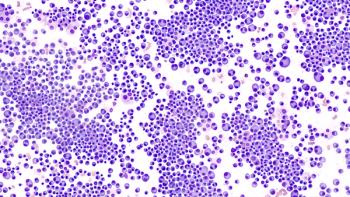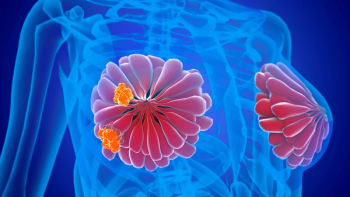
Q&A: Nursing Considerations From Immune Cell Effector Therapy Experts
2025 ICE-T Conference presenters explain what nurses and APPs should take into account as immune cell effector therapies become more widely used.
As T-cell engager therapies expand beyond hematologic malignancies into solid tumors, oncology nurses and advanced practice providers (APPs) remain essential to navigating an evolving spectrum of immune-related toxicities, according to presenters at the 2025 Immune Cell Effector Therapies (ICE-T) Conference.
Daniel Carrizosa, MD, MS, who practices at Atrium Health Levine Cancer Institute (Thoracic-Pulmonary) and is an associate professor of cancer medicine at Wake Forest University School of Medicine, both in Charlotte, North Carolina, emphasized that with the emergence of bispecific T-cell engagers (BiTE), such as
Nausheen Ahmed, MD, an associate professor of hematologic malignancies and cellular therapeutics at the University of Kansas Medical Center in Kansas City, Kansas, pointed out that nurses and APPs treating patients receiving immune effector cell therapies should be mindful to support patients by creating a normal environment, such as providing cues that help the patient retain a circadian rhythm or sense of day and night.
Al-Ola Abdallah, MD, a myeloma physician and associate professor and director of the cell disorder program at the University of Kansas Medical Center, Kansas City, Kansas, highlighted that AEs not found in clinical trials are now emerging in CAR T-cell therapies for hematologic malignancies and should be taken seriously. These AEs can include hemophagocytic lymphohistiocytosis (HLH) or prolonged cytopenias and should be monitored for early on.
Oncology Nursing News: How can nurses and APPs expect the AE profiles of T-cell engagers to vary in solid tumors vs hematologic malignancies?
Carrizosa: It’s important to always realize that it is a team effort to take care of every one of our patients, especially in [non–small cell] lung cancer and in
What supportive care interventions are underutilized for patients dealing with AEs from immune cell effector therapies?
Ahmed: In terms of
Make sure that the patient has as normal of an environment as possible. If they’re an admitted inpatient, have their hearing aids in place, very simple things like that, and cues that help the patient maintain a normal sense of day and night. Those things will help to prevent the delirium aspect of it, especially in
What updates in myeloma and other plasma cell disorders are most pertinent to nurses and APPs?
Abdallah: The more important thing is to understand the indications of CAR T-cell therapy. That’s the important thing for nurses and APPs to understand about
This transcript has been edited for clarity and conciseness.
Newsletter
Knowledge is power. Don’t miss the most recent breakthroughs in cancer care.
















































































